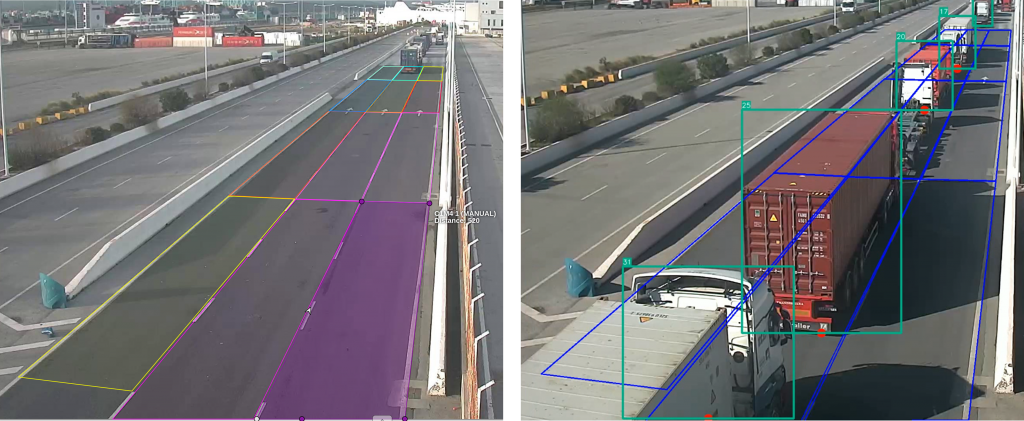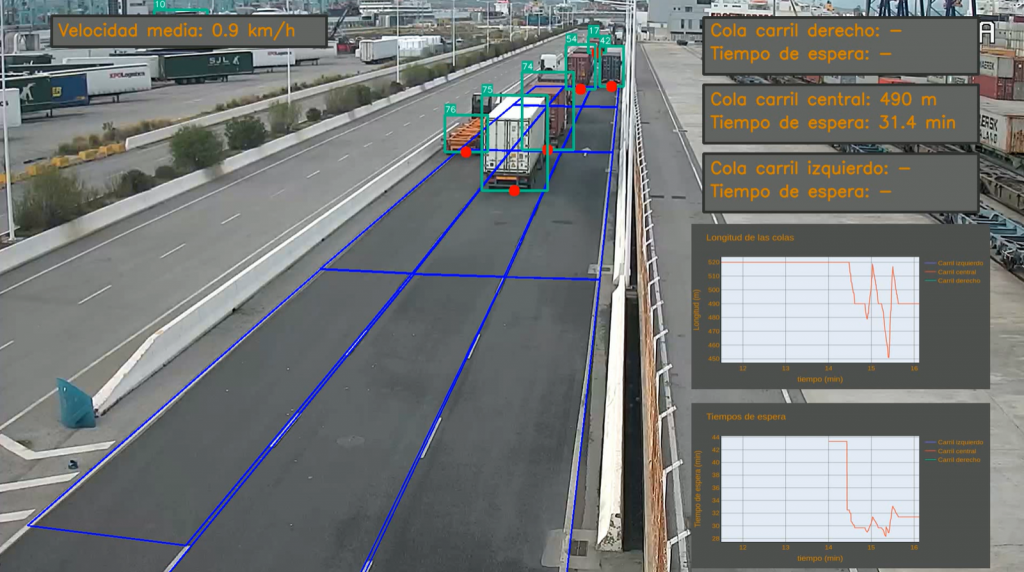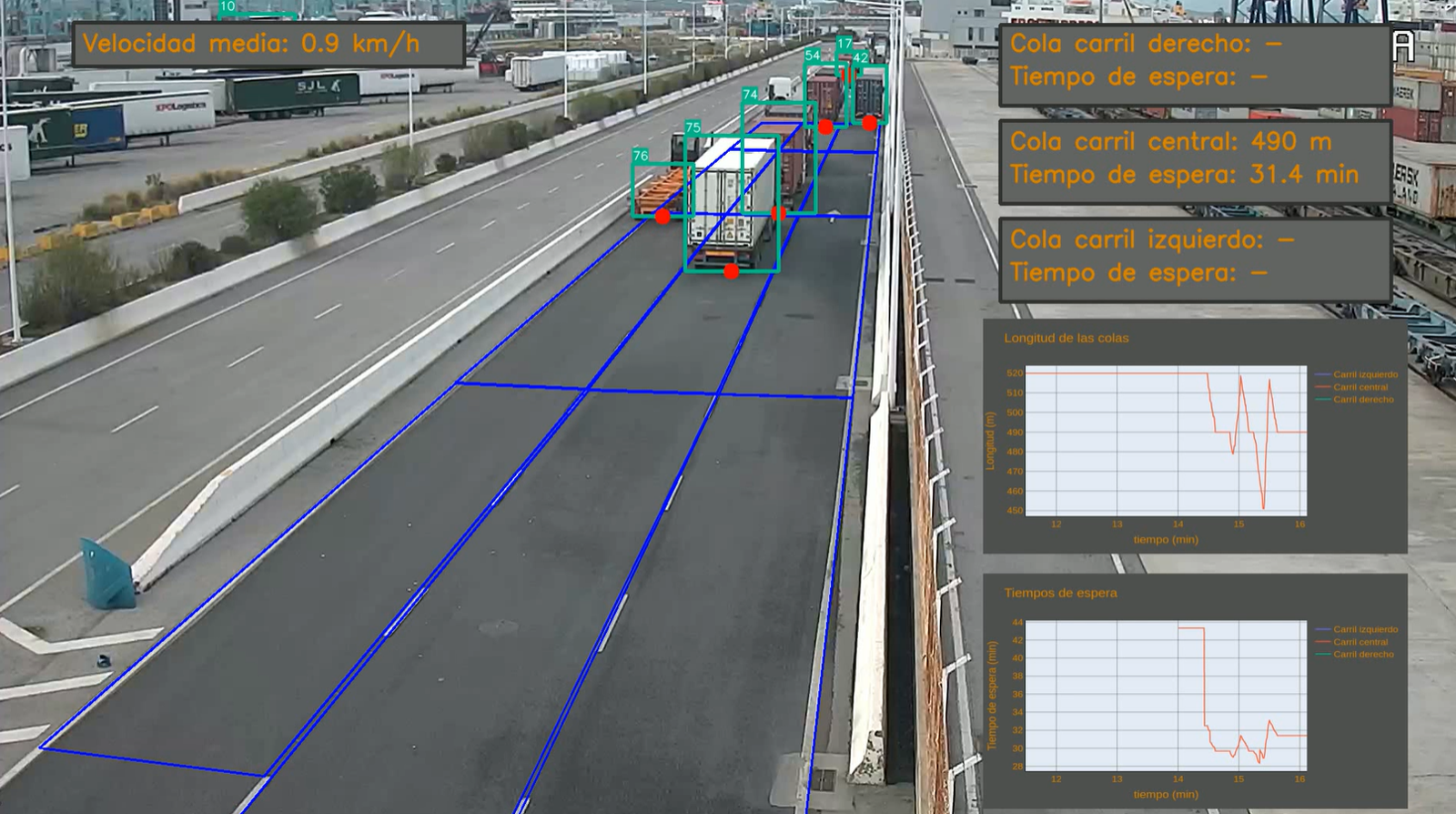Summary:
The innovation project was constituted as a proof of concept (PoC) whose challenge was to provide, from the use of video images from the APBA’s Image Capture System (SCI), real-time information about the degree of occupation of the entrance and exit roads to different port areas as well as the arrival flows of trucks for the different time slots of the day, which allows both the APBA and the other agents of the logistics chain to improve their operational efficiency, reducing waiting times and optimizing the flow of the cargo.
The challenge was developed by the company Babel in collaboration with AWS, whose technological solution made it possible to demonstrate that by means of Computer Vision and Artificial Intelligence tools, it is feasible to detect the queues of trucks existing at the different accesses and also to record the speed and associated waiting times.
The scope of the proof of concept consisted in the development and implementation of a minimum viable software product (MVP) based on algorithms that allow processing the images captured by the existing cameras in the port and automatically return, in real time, information on the degree of occupation of the accesses to the terminals. In this way it is possible to obtain both the occupancy and the estimated waiting times.
For this purpose, these algorithms allow:
- Detect vehicles/trucks through video cameras.
- Track vehicles in motion.
- Apply business rules to consider what is a queue of vehicles.
- Use the position of the vehicles to estimate the length of the queue in each lane of the road, and, in this way, obtain the waiting times according to the forward speed.
The ultimate goal is to minimize traffic congestion problems in order to improve the quality of service offered by the port. To this end, the APBA intends to have a tool that (1) allows real-time monitoring of the state of activity at the gates of container terminals, TTP, PIF, port access or shipping areas and (2) based on historical records and other data sources, allows to obtain a prediction of the distribution of truck arrivals throughout the day and the estimated waiting times in the short-medium term.
This will enable the APBA, in the future, to offer quality information to carriers in order to facilitate their decision making when planning their stay in port, improving their operational efficiency and in turn reducing emissions produced by trucks and heavy traffic.


The project’s innovation:
- Use of AI for the automatic detection of events of interest based on the analysis of images and videos from the APBA’s own Image Capture System and without the need for specific devices that require external interaction (sensors, tags, beacons, etc.).
- Incremental learning capacity of visual recognition algorithms thanks to Machine Learning techniques.
- Use of neural networks and Deep Learning to improve the traceability of heavy vehicles in the port area.
- Ability to calculate vehicle speeds and waiting times, understanding exceptional situations that occur in the lanes and that should not be considered as queues.
- Solution based on a hardware agnostic system.
The project’s product:
- Software prototype of a platform for monitoring and analyzing traffic flows at the accesses to the PBA container terminals.
A video demonstration of the developed prototype is shown below:




Leave a Reply